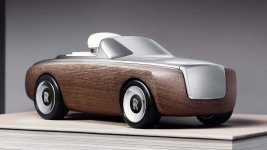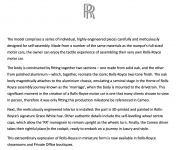The 1/4” diameter dowels I have been buying have been all over the place dimensionally. In addition, several were not even round. This created assembly issues as I was gluing up wood wheels to the dowels for push toys.
To a lesser degree it made the choice of bearing holes problematic.
I made a 1/4” diameter dowel draw die that worked impressively well for bringing dowels into size tolerances I could use.
I have two questions.
1. I see people hammering the dowels through dies. And I see people pulling the dowels through the dies. In addition I have seen people pushing or pulling the dowels while having the dowel chucked into a hand held electric drill.
Any thoughts on this?
2. Any thoughts on the lengths I should be feeding through the die? Obviously, if I am hammering the dowel, I will need to keep it shorter than if I am pulling it.
Not a big rush on this. I am starting to make next year’s donated Christmas gifts. So I have time. The wheel assemblies ar the last piece of the puzzle.
Note: I made the die from 1.00” wide X 0.100” mild steel by simply drilling a 1/4” diameter hole and dressing the exit with fine file. When it gets dull, I will simply drill another hole. I should need about 200 inches of drawn axles.
That is 2 axles per toy, each 2” long appx. (I believe my cutoff jig is for 1-7/8”.)
Thanks,
Packard
To a lesser degree it made the choice of bearing holes problematic.
I made a 1/4” diameter dowel draw die that worked impressively well for bringing dowels into size tolerances I could use.
I have two questions.
1. I see people hammering the dowels through dies. And I see people pulling the dowels through the dies. In addition I have seen people pushing or pulling the dowels while having the dowel chucked into a hand held electric drill.
Any thoughts on this?
2. Any thoughts on the lengths I should be feeding through the die? Obviously, if I am hammering the dowel, I will need to keep it shorter than if I am pulling it.
Not a big rush on this. I am starting to make next year’s donated Christmas gifts. So I have time. The wheel assemblies ar the last piece of the puzzle.
Note: I made the die from 1.00” wide X 0.100” mild steel by simply drilling a 1/4” diameter hole and dressing the exit with fine file. When it gets dull, I will simply drill another hole. I should need about 200 inches of drawn axles.
That is 2 axles per toy, each 2” long appx. (I believe my cutoff jig is for 1-7/8”.)
Thanks,
Packard







